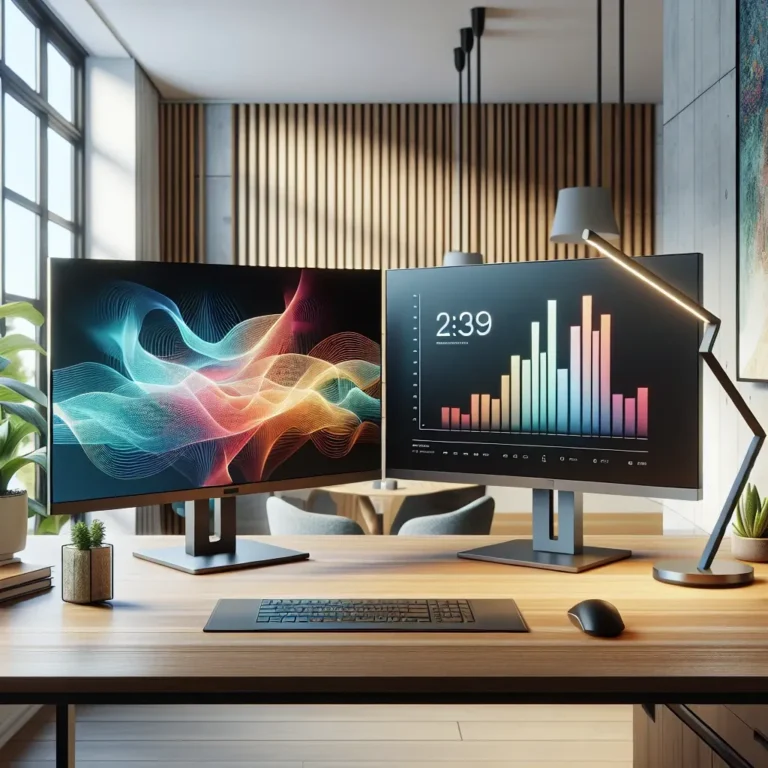Choosing the right OLED monitor can significantly enhance your viewing experience, whether you’re a gamer, a graphic designer, or just someone who enjoys high-quality visuals. OLED monitors offer superior contrast, deep blacks, and vibrant colors, making them an excellent choice for many users. In this article, we’ll explore the key factors you should consider when selecting an OLED monitor that best suits your needs.
Factors to Consider
Below are several critical factors to help you determine which OLED monitor will meet your requirements:
1. Screen Size and Aspect Ratio
Your choice of screen size and aspect ratio largely depends on the intended use of the monitor. Smaller screens (around 27 inches) are often suitable for office work and standard tasks, while larger screens (32 inches and above) are more advantageous for gaming, video editing, and immersive experiences.
| Screen Size | Ideal Use |
|---|---|
| 27 inches | Office work, standard tasks |
| 32 inches and above | Gaming, video editing, immersive experiences |
2. Resolution
The resolution you need depends on how you plan to use your OLED monitor. Higher resolutions provide more detail, making them excellent for design work and gaming. Common resolutions include:
- Full HD (1920×1080): Suitable for everyday use and casual gaming.
- Quad HD (2560×1440): Good for professional work and gaming, offering a balance between performance and visual clarity.
- 4K (3840×2160): Ideal for video editing, professional design work, and high-end gaming.
3. Refresh Rate
The refresh rate is crucial for activities that involve fast-moving visuals. Higher refresh rates (measured in Hz) provide smoother visuals, which are particularly beneficial for gamers and video editors.
- 60Hz: Suitable for general use and office work.
- 120Hz and above: Ideal for gaming, reducing motion blur and providing a smoother experience.
4. Connectivity Options
Ensure the OLED monitor you choose has the necessary ports and connectivity options for your devices. Common ports include HDMI, DisplayPort, USB-C, and Thunderbolt. Having multiple connectivity options allows for greater flexibility in setting up your workstation or gaming setup.
5. Color Accuracy and Coverage
Color accuracy and coverage are vital for tasks involving photo and video editing. Monitors that offer higher color accuracy provide more precise colors, crucial for design work.
- sRGB: Standard color space for web content.
- Adobe RGB: Offers a wider color range, ideal for professional photo editing.
- DCI-P3: Used in the film industry, offering vibrant and accurate colors.
6. Ergonomics and Build Quality
Consider monitors with adjustable stands, allowing you to change the height, tilt, and swivel. Ergonomic features are essential for long work sessions, reducing strain on your neck and back.
Popular OLED Monitor Models
Here are some popular OLED monitor models to consider:
- LG UltraFine OLED Pro 32EP950: Excellent for professional use with exceptional color accuracy and 4K resolution.
- ASUS ProArt PA32DC: Ideal for photo and video editing, offering wide color gamut coverage and high peak brightness.
- Dell UltraSharp UP3017Q: Great for both gaming and professional work, featuring 4K resolution and excellent color reproduction.
- Alienware AW5520QF: Perfect for gaming, with a 55-inch screen, 120Hz refresh rate, and AMD FreeSync.
Conclusion
Choosing the right OLED monitor depends on various factors including screen size, resolution, refresh rate, connectivity, color accuracy, and ergonomics. Assess your needs based on your primary use cases—whether it’s gaming, professional design work, or general use—and select a monitor that aligns with those requirements. By understanding these critical aspects, you can make an informed decision that will enhance your productivity and viewing experience.



